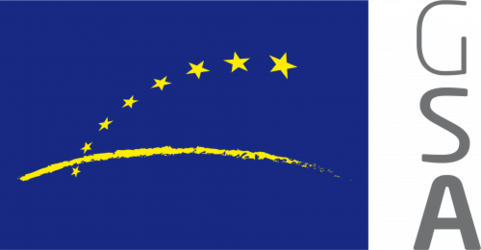Galileo satellite engineering model testing
The Engineering Model of the Galileo In-Orbit Verification satellites has completed several phases of testing in cooperation with the ground segment and is now being prepared for electromagnetic compatibility testing.
The second in a series of System Validation Tests (SVT-0B1) has been executed from the Galileo Launch and Early Orbit Phase Operations Control Centre at CNES in Toulouse, France. A number of important tests were performed on the platform subsystems, including Attitude and Orbit Control System mode transitions, power subsystem and transponder functional tests and onboard computer tests.
The purpose of an SVT is to verify the ground infrastructure needed to operate the satellite during its mission, including the flight operations procedures.

Following completion of the SVT-0B1 tests, the Engineering Model (EM) satellite has been placed in its final, closed-panel configuration and transferred to the electromagnetic test chamber at Thales Alenia’s facility in Rome. Here, the Integrated Satellite Test (IST) and electromagnetic compatibility (EMC) testing will be performed after a period of test development.
The purpose of the IST is to verify the satellite hardware and software function together as specified. The satellite EMC test will demonstrate the satellite’s ability to function in the electromagnetic environment it will experience during ground, launch and flight operations – and, in addition, confirm that it does not generate any unwanted electromagnetic emissions.
Another import milestone was achieved when the EM payload was mechanically mated and electrically integrated with the EM platform. This paved the way for the IST and EMC test. The first SVT (SVT-0A) was conducted from the Galileo Ground Control Centre in Oberpfaffenhofen, Germany. The mission control team were able to send telecommands and receive telemetry from the EM satellite while it was in the Thales Alenia integration hall in Rome. All EM platform subsystems were exercised, including avionics, power, telemetry and telecommand, thermal control and propulsion.















 Germany
Germany
 Austria
Austria
 Belgium
Belgium
 Denmark
Denmark
 Spain
Spain
 Estonia
Estonia
 Finland
Finland
 France
France
 Greece
Greece
 Hungary
Hungary
 Ireland
Ireland
 Italy
Italy
 Luxembourg
Luxembourg
 Norway
Norway
 The Netherlands
The Netherlands
 Poland
Poland
 Portugal
Portugal
 Czechia
Czechia
 Romania
Romania
 United Kingdom
United Kingdom
 Slovenia
Slovenia
 Sweden
Sweden
 Switzerland
Switzerland
































